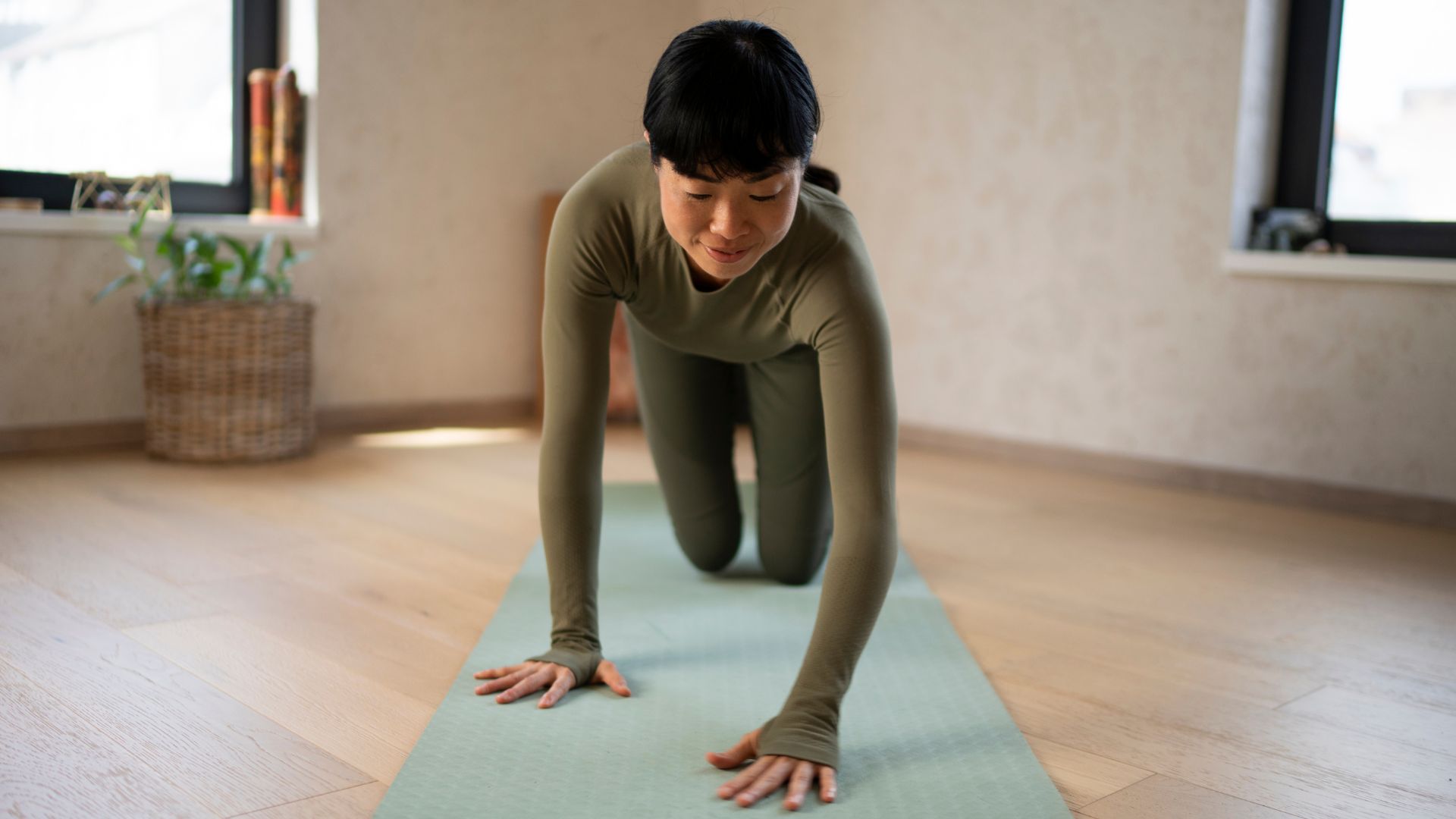The Superman exercise is so simple, yet improves posture and back strength 'like nothing else' - here's how to do it
I did the Superman exercise for two weeks, and I can’t rave about it enough. From being hunched over at my laptop to perfect typing posture, it's my new go-to


No one is immune to a little back pain now and again, so luckily, there's the aptly-named Superman exercise. It's a simple, accessible move that improves spine flexion, eases stiffness, and improves functional fitness.
A quick search of the term ‘posture correction exercises’ will garner you a plethora of back exercises that purport to strengthen the back, shoulders and spine while working the all-important core muscles. I bet it wouldn't take long to spot the Superman exercise among them, right alongside the plank and shoulder taps.
After trying it for two weeks, I agree - the Superman exercise is a powerhouse move. It can also be done pretty much anywhere and requires no equipment or previous skill, making it ideal for everyone, from seasoned gym goers to beginners starting out.
What is the Superman exercise?
The Superman exercise is a brilliant bodyweight movement that mimics the flying position of the iconic superhero, hence the name, explains personal trainer Rachael Sacerdoti. “It’s an isometric exercise (holding one position without moving) where you lie face down and simultaneously lift your chest, arms, and legs off the ground, creating that classic ‘flying’ shape.”
It's an underrated move, adds Kate Rowe-Ham, a certified personal trainer and the founder of Owning Your Menopause, as it can make "a real difference to your strength and how supported your spine feels."
“Simple yet powerful, it targets the muscles running down the back of your body known as your posterior chain, which are often overlooked, especially as we move through midlife," she says.
How to do the Superman exercise
As always, good technique is the key not only to banking those benefits, but also making sure we’re not injuring ourselves in the process. Here, Rowe-Ham takes us through the steps to Superman success.
Sign up to our free daily email for the latest royal and entertainment news, interesting opinion, expert advice on styling and beauty trends, and no-nonsense guides to the health and wellness questions you want answered.
- Start by lying face down on a mat with arms and legs extended.
- Take a breath, then gently lift your arms, chest and legs off the floor while keeping your neck in a neutral position.
- Think about reaching through your fingertips and toes rather than trying to lift as high as possible.
- Hold for a few seconds then slowly lower back down with control.
Benefits of the Superman exercise
1. Improves posture
First and foremost, the move is an elite posture-enhancing exercise unlike any other for those of us who spend a lot of time sitting down.
"The Superman move is brilliant for posture correction as it directly counteracts a hunched over position (caused by sitting at a desk/ looking at a screen all day),” notes Sacerdoti. “It achieves this by strengthening the muscles that pull your shoulders back and lift your chest.”
2. Boosts back strength and flexibility
Got that classic mid-back niggle or stiffness? Superman is the solution. We often neglect our back muscles when weight training, but this exercise will engage and activate not only the larger ones that run down our posterior chain, but it’ll also challenge the all-important smaller, stabilising muscles in the back that don’t get much love.
“This exercise serves a dual purpose of improving posture, which in turn helps with lower back health, as well as strengthening the erector spinae (the deep muscles that support your spine),” shares Sacerdoti. “Stronger back muscles mean better spinal stability and reduced risk of lower back pain.”
And we know that a healthy spine is a flexible one. This move will help you work into those vertebrae for better mobility and flexibility, too.
3. Strengthens the core
This may surprise you, but your back is actually classed as part of your core. When trainers refer to the core, they’re not just talking about our abs and obliques. They mean all the muscles that surround and support the spine.
“Core exercises engage multiple muscle groups simultaneously, strengthening not only the abdominal muscles but also the back, hips, and pelvis,” says Rowe-Ham. “Supermans will challenge your deep core stabiliser muscles, including the multifidus and transverse abdominis, helping to improve stability and balance, particularly during dynamic or uneven movements.”
This makes the Superman exercise one of the best core exercises to do at home, along with classics like crunches, sit-ups, and dead bugs.
4. Boosts functional fitness
An important part of strength training (especially as we age) is its role in boosting functional fitness, which is how well (and easily) we move through everyday motions.
“The Superman move is excellent for functional strength as it mimics activities like lifting objects from the floor or getting up from lying down, making you stronger for real-life movement,” advises Sacerdoti.
You can devote your whole workout routine to functional fitness (that's called callisthenics), but a simple exercise here and there is all you need to make a difference.
5. The Superman is accessible and effective
Last but certainly not least, one of the primary advantages of the superman move is its accessibility.
“You need no equipment, just floor space, making this move perfect for home workouts or when you’re travelling,” agrees Sacerdoti.
What muscles does the Superman exercise work?
- Erector spinae: The deep back muscles that run along your spine, crucial for maintaining upright posture
- Glutes: Key muscles that create hip extension and stability
- Rhomboids and middle trapezius: Upper back muscles that pull your shoulder blades together
- Rear deltoids: Back portion of your shoulder muscles
- Hamstrings: Back of your thighs, helping with hip extension
- Deep core muscles: Including multifidus and transverse abdominis for spinal stability
- Latissimus dorsi: Large back muscles that help with shoulder positioning
What's a good alternative to the Superman exercise?
No matter how great a move is, if you don’t get on with it, you won’t do it. The Superman move might be one of the best back exercises, but if you don't do it, then there's no benefit to it at all.
There are always variations on an exercise that can take it from average (you won’t love it) to amazing (you can’t get enough). So, if the Superman exercise just isn’t your bag, try these alternatives for similar results.
1. Side plank
“A great alternative to the superman, which trains many of the same muscle groups in the abdominals and lower back, is a side plank,” says personal trainer Charlotte Dunnell.
“You can start with your bottom elbow and knee on the floor for more support, or try an incline plank, which is essentially a plank off a stable elevated surface (such as a bench or a countertop). To progress the exercise, you can add in alternating knee-to-chest tucks.”
2. Bird dog
“If you’re looking for something more supported or just want a change of pace, the bird dog is a great alternative to a superman,” says Rowe-Ham.
“Performed on all fours, it targets the back and core while offering more stability than the Superman. From a tabletop position with hands under shoulders and knees under hips, you simply extend the opposite arm and leg out straight, pause to engage your core, then return to the starting position and switch sides.
“It’s a fantastic move for improving balance, coordination, and back strength.”
3. Reverse fly
If you’re interested in training more of the upper back muscles, try doing a double-arm bent-over reverse fly.
"This exercise is excellent for building strength in the muscles surrounding the shoulder blades and can really improve posture when performed regularly,” notes Dunnell.
“To perform the exercise, bend slightly at your hips (and focus on stretching through your hamstrings). Keep your back flat and straight. Then lift your arms out to both sides, with a very slight bend in the elbows. Return your arms to the starting position to complete one rep," she says.
"You can start with body weight and then progress to using light dumbbells when you’re confident with your form.”
Anna Bartter is a freelance health and fitness writer who writes across a range of publications, including woman&home, Marie Claire, Stylist, Psychologies and more. She's never happier than when trying out a new wellbeing trend, and when she's not writing, she's most likely to be found at a reformer Pilates class.
You must confirm your public display name before commenting
Please logout and then login again, you will then be prompted to enter your display name.
